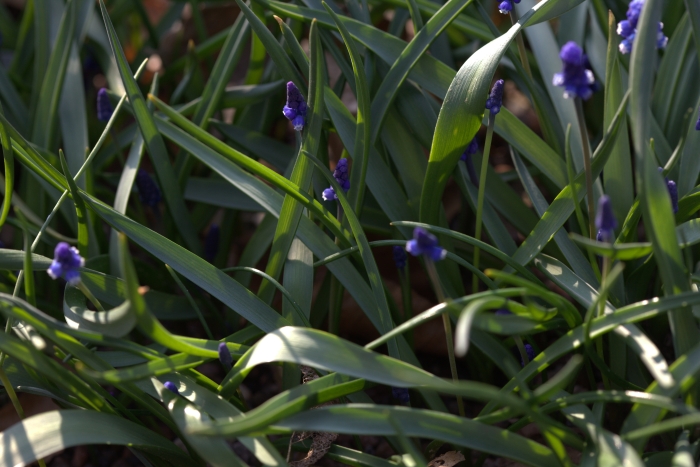Aucher-Éloy Grape Hyacinth
(Muscari aucheri)
Aucher-Éloy Grape Hyacinth (Muscari aucheri)
/
/

Averater
CC BY-SA 3.0
Image By:
Averater
Recorded By:
Copyright:
CC BY-SA 3.0
Copyright Notice:
Photo by: Averater | License Type: CC BY-SA 3.0 | License URL: https://creativecommons.org/licenses/by-sa/3.0 | Uploader: Averater | Publisher: Wikimedia Commons | Title: Muscari_aucheri_03.jpg | Notes: User created page with UploadWizard |






Estimated Native Range
Summary
Muscari aucheri, commonly known as Aucher-Éloy Grape Hyacinth, is a deciduous perennial bulb native to rocky, open hillsides and scrublands in Turkey. It is a diminutive plant, often reaching less than 10 centimeters (3.9 inches) in height, though some cultivated forms may be taller. Each bulb typically produces two or three leaves that are relatively wide for a Muscari, with a greyish-green upper side and a distinctive hooded or boat-shaped tip. The flowers of M. aucheri are notable for their dense spike, or raceme, with the lower fertile flowers being bright blue with whitish lobes or teeth at the mouth, while the upper sterile flowers are paler blue or almost white. The flowering season occurs in spring, and the blooms are highly attractive to pollinators.
Aucher-Éloy Grape Hyacinth is valued for its vibrant blue flowers and ease of cultivation, making it a popular choice for rock gardens, borders, and underplanting with deciduous shrubs. It has been awarded the Royal Horticultural Society’s Award of Garden Merit, indicating its exceptional performance in gardens. While it is easy to grow, it does not multiply rapidly, which can be an advantage in preventing unwanted spread. For best results, plant M. aucheri in full sun to part shade, provide medium amounts of water, and ensure the soil has medium to fast drainage to mimic its native rocky habitats. It is generally pest-free, but can be susceptible to bulb rot if overwatered or planted in poorly drained soils.CC BY-SA 4.0
Aucher-Éloy Grape Hyacinth is valued for its vibrant blue flowers and ease of cultivation, making it a popular choice for rock gardens, borders, and underplanting with deciduous shrubs. It has been awarded the Royal Horticultural Society’s Award of Garden Merit, indicating its exceptional performance in gardens. While it is easy to grow, it does not multiply rapidly, which can be an advantage in preventing unwanted spread. For best results, plant M. aucheri in full sun to part shade, provide medium amounts of water, and ensure the soil has medium to fast drainage to mimic its native rocky habitats. It is generally pest-free, but can be susceptible to bulb rot if overwatered or planted in poorly drained soils.CC BY-SA 4.0
Plant Description
- Plant Type: Bulb
- Height: 0.3-0.5 feet
- Width: 1-2 feet
- Growth Rate: Moderate
- Flower Color: Blue
- Flowering Season: Spring
- Leaf Retention: Deciduous
Growth Requirements
- Sun: Full Sun, Part Shade
- Water: Medium
- Drainage: Medium, Fast
Common Uses
Bank Stabilization, Bee Garden, Border Plant, Butterfly Garden, Deer Resistant, Fragrant, Groundcover, Low Maintenance, Potted Plant, Rabbit Resistant, Rock Garden, Salt Tolerant, Showy Flowers, Street Planting
Natural Habitat
Rocky, open hillsides and scrublands in Turkey
Other Names
Common Names: Grape Hyacinth, Aucher-Träubel, Persisk Pärlhyacint
Scientific Names: , Muscari aucheri, Muscari tubergenianum, Muscari sintenisii, Muscari lingulatum, Botryanthus aucheri,
GBIF Accepted Name: Muscari aucheri (Boiss.) Baker